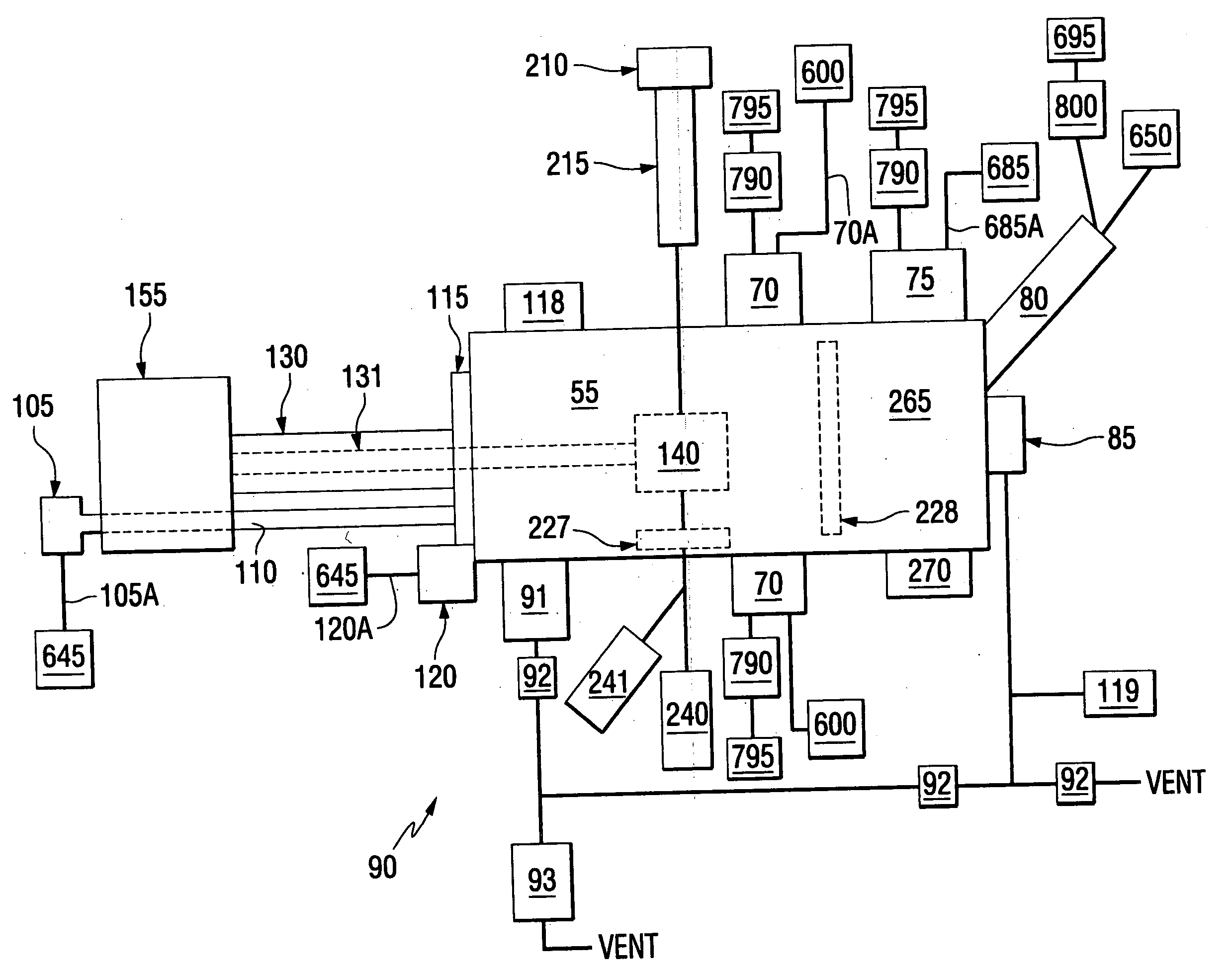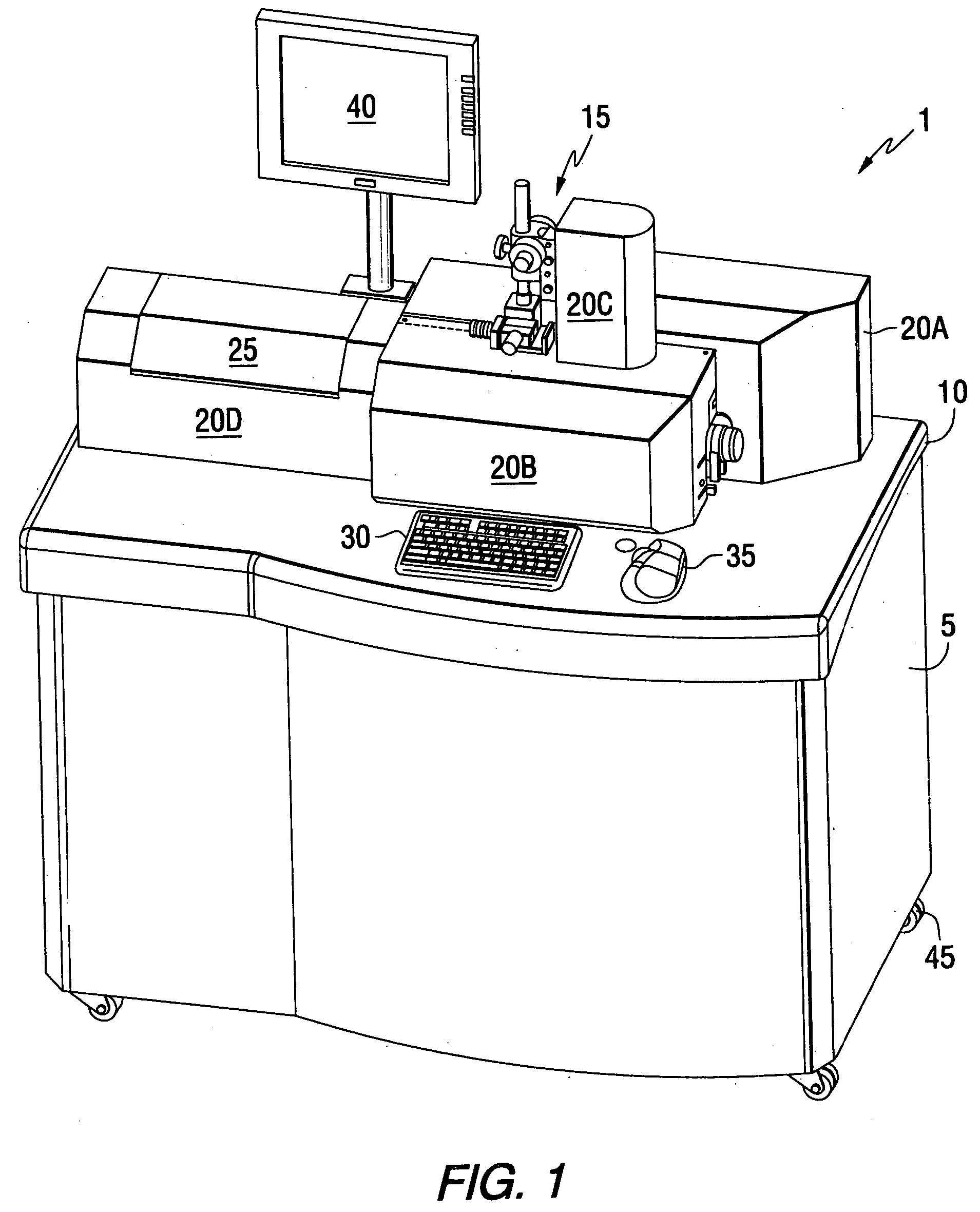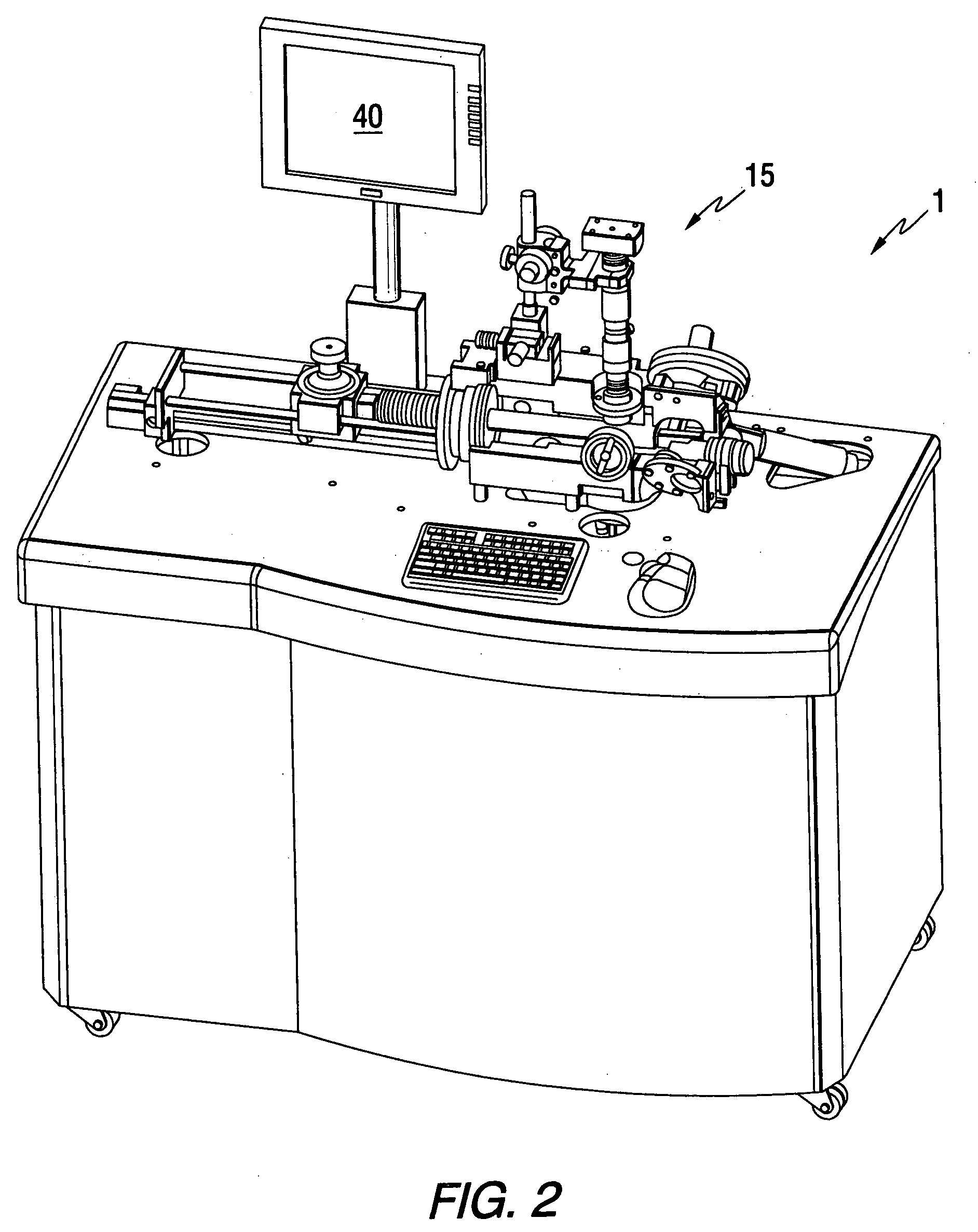Device and method for milling of material using ions
a technology of ions and milling devices, which is applied in the direction of discharge tube/lamp details, material analysis using wave/particle radiation, nuclear engineering, etc., can solve the problems of adversely affecting the quality of the specimen image, the inability of higher current milling to maintain a small beam diameter, and the inability to develop higher energies with appropriate current, etc., to achieve the effect of reducing the amount of sputtered material, promoting the ability to raster the beam, and small beam spo
- Summary
- Abstract
- Description
- Claims
- Application Information
AI Technical Summary
Benefits of technology
Problems solved by technology
Method used
Image
Examples
Embodiment Construction
[0045] Referring now to FIGS. 1 and 2, an ion mill 1 is shown having a base cabinet 5, which is utilized to support the operable equipment and to enclose the power supply, vacuum system and circuitry utilized in the device. Base cabinet 5 includes a plurality of removable or openable panels to provide access to the internal components and storage spaces. The cabinet includes a counter top 10, which is made of an inert and durable material, which will withstand both physical and chemical abuse or attack while in use in a laboratory setting. In operation, the combined milling mechanism 15 is provided with covers 20A through 20D, which are utilized to provide both an aesthetically pleasing exterior surface, as well as protection for the relatively delicate device components. Each of the covers 20A through 20D provides removable access to these components for repair or inspection. A dewar access panel 25 is provided as a readily openable or removable cover to permit easy access to the i...
PUM
| Property | Measurement | Unit |
|---|---|---|
| Angle | aaaaa | aaaaa |
| Angle | aaaaa | aaaaa |
| Angle | aaaaa | aaaaa |
Abstract
Description
Claims
Application Information
 Login to View More
Login to View More - R&D
- Intellectual Property
- Life Sciences
- Materials
- Tech Scout
- Unparalleled Data Quality
- Higher Quality Content
- 60% Fewer Hallucinations
Browse by: Latest US Patents, China's latest patents, Technical Efficacy Thesaurus, Application Domain, Technology Topic, Popular Technical Reports.
© 2025 PatSnap. All rights reserved.Legal|Privacy policy|Modern Slavery Act Transparency Statement|Sitemap|About US| Contact US: help@patsnap.com



